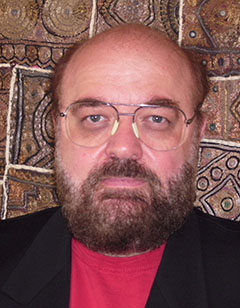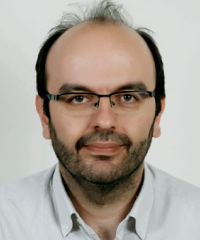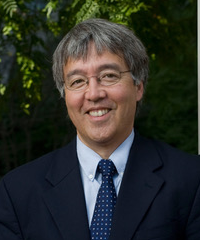Distiguished Expert Panel (DEP) Theme:
In-Network Computing and Programmability
DEP Description: In-Network Computing and Programmability is considered promising if not essential for delivering adequate performance and efficiency for many exciting new services such as hologram communication and networked Virtual Reality/Augmented Reality (VR/AR). For example, networked VR/AR suggests that VR/AR support functions could assist a user application by performing certain tasks (such as face recognition) that are too compute-intensive for some mobile devices. Low latency and high bandwidth requirements demand that such relevant network functions be activated close to the rendering devices, i.e., in the network, not at a far-away data center. Other use-cases are privacy-preserving analytics and processing/filtering large amounts data at the edge.In-Network Computing & Programmability enables implementing application behavior on a set of distributed elements, which could be compute platforms, network elements, and network management systems. It does refer to triggering /injecting executable code into network execution environments, and also to the notion of distributed computing, and the efficient realization of corresponding functions such as state synchronization. Implementing such functionality in the network can enable new levels of optimization and efficiency – for example by applying joint optimization on both networking and computing resources.
There are at least two different perspective of in-network computing: 1) the distributed computing perspective [configuring on demand (virtual) network functions and context in some slice of the network]; and 2) the network programmability perspective (using switch data plane programming and related control/management plane functionality to optimize application performance).
This panel will provide a forum to discuss these different perspectives, relevant use cases and current as well as future research questions, for example: what are suitable general-purpose communication and computing abstractions for In-Network Computing and Programmability? How to address integrity, security and privacy concerns? How does In-Network Computing & Programmability relate to cloud systems such as Cloud Platform-as-a-Service and Cloud Network Slice as a Service?
Moderator:
1. Prof. Alex Gallis

Alex Galis
(UCL, UK)
Bio: Alex Galis is a Professor in Networked and Service Systems at University College London (UCL). His current interests are on 5G/6G/Network 2030 networking, software defined infrastructure and services, network and cloud programmability and management. He has co-authored more than 290 publications in the future Internet areas: networks and services, management, networking clouds, virtualization and programmability including 11 research books. He has contributed to ITU-T standards on Future Networks and 5G Networks and he has worked on IETF drafts in Autonomic networking and network slicing. He has been a co-principal investigator at UCL on a number of EU research projects with a total UCL budget of more than 12 M£, including overall technical leadership of the MISA – Management of IP networks, FAIN – programmable networks, CONTEXT – context aware networking, AUTONOMIC INTERNET – autonomic network and NECOS – Novel Enablers for Cloud Slicing projects. He was a member of the Steering Group of the Future Internet Assembly (FIA) and he led the Management and Service–aware Networking Architecture (MANA) working group at FIA. He acted as PTC/ keynotes/ panels/ workshops co-chair of 36 IEEE conferences and reviewer in more than 100 IEEE conferences and journals. He is a co-editor of the IEEE Communications Magazine series on Telecom Software, Network Virtualization, and Software Defined Networks, the IEEE JSAC series on Network Softwarization and Enablers, and ETRI Journal published by Wiley. He is an International Academy, Research, and Industry Association (IARIA) Fellow (2011, https://www.iaria.org/fellows.html). He was selected as a Vice Chair of the ITU-T SG13 Group on Future Networking. He is involved in IEEE SDN initiative including co-chairing of the IEEE SDN publication committee.
Panelists:
- Prof. Bruce Maggs
- Prof. Lefteris Mamatas
- Prof. Jim Kurose
- Dr. Marie-José Montpetit
- Dr. Zhe Lou

Bruce Maggs
(Duke University, USA)
Bio: Bruce Maggs received the S.B., S.M., and Ph.D. degrees in computer science from the Massachusetts Institute of Technology in 1985, 1986, and 1989, respectively. His advisor was Charles Leiserson. After spending one year as a Postdoctoral Associate at MIT, he worked as a Research Scientist at NEC Research Institute in Princeton from 1990 to 1993. In 1994, he moved to Carnegie Mellon, where he stayed until joining Duke University in 2009 as a Professor in the Department of Computer Science. While on a two-year leave-of-absence from Carnegie Mellon, Maggs was a founding employee of Akamai Technologies, serving as its first Vice President for Research and Development. In 2018 he was part of a large team that received the inaugural SIGCOMM Networking Systems Award for the Akamai CDN, and was named an ACM Fellow.Maggs is a professor at Duke University.

Lefteris Mamatas
(University of Macedonia, Greece)
Bio: Lefteris Mamatas is Assistant Professor in the Department of Applied Informatics, University of Macedonia, Greece. He leads the Softwarized & Wireless Networks Research Group (http://swn.uom.gr) in the same University. He worked as a researcher at the University College London (UK), Space Internetworking Center/Democritus University of Thrace (Greece), and DoCoMo Eurolabs (Munich). His research interests lie in the areas of Software-Defined Networks, Internet of Things, 5G Networks, and Multi-Access Edge Computing. He participated in many international research projects, such as NECOS (H2020), FED4FIRE+ OC4 (H2020), WiSHFUL OC2 (H2020), MONROE OC2 (H2020), Dolfin (FP7), UniverSELF (FP7), and Extending Internet into Space (ESA). He has published more than 60 papers in international journals and conferences. He served as a General Chair for the WWIC 2016 conference and the INFOCOM SWFAN 2016 workshop, as a TPC Chair for the INFOCOM SWFAN 2017, E-DTN 2009, IFIP WWIC 2012 conferences/workshops and as a Guest Editor for the Elsevier Ad Hoc Networks Journal.

Jim Kurose
(University of Massachusetts Amherst, USA)
Bio: Jim Kurose is a Distinguished University Professor in the College of Information and Computer Sciences at the University of Massachusetts Amherst, where he has been on the faculty since receiving his PhD in computer science from Columbia University. He received a BA in physics from Wesleyan University. He has held a number of visiting scientist positions in the US and abroad, including IBM Research, INRIA and the Sorbonne University. He is proud to have mentored and taught an amazing group of students, and to have received a number of awards for his research, teaching and service, including the IEEE Infocom Award, the ACM SIGCOMM Lifetime Achievement Award, the ACM Sigcomm Test of Time Award, and the IEEE Computer Society Taylor Booth Education Medal. With Keith Ross, he is the co-author of the best-selling textbook, Computer Networking: a Top Down Approach, now in its 7th edition. He is a Fellow of the ACM and the IEEE.
From January 2015 to September 2019, Jim was on leave, serving as Assistant Director at the US National Science Foundation, where he led the Directorate of Computer and Information Science and Engineering. While at NSF, he also served as co-chair of the Networking and Information Technology Research and Development Subcommittee of the National Science and Technology Council Committee on Technology, facilitating the coordination of networking and information technology research and development efforts across Federal agencies. In 2018, Jim also served as the Assistant Director for Artificial Intelligence in the White House Office of Science and Technology Policy.

Marie-José Montpetit
(MIT, USA)
Bio: Marie-José Montpetit is a well-known network architect and Internet researcher with industry-leading and prize-winning achievements. Her work in Internet multi stream video has won both a Motorola Innovation Prize and a MIT TR 10. Repeatedly she has had raw ideas put into successful research projects, products and network services most recently in the emerging computing in the network area where she contributed to the creation of the COIN research group. Her current research is on a common data layer for edge computing and networking in IOT and multimedia. She is a Research Affiliate at the MIT Media Laboratory and an Affiliate Professor at Concordia University in Montreal. She currently advises a Montreal startup in IOT and distributed computing. She holds a Ph.D in Electrical and Computer Engineering from Ecole Polytechnique of Montreal and shares her time between Boston and Montreal.

Zhe Lou
(Huawei Technologies, Germany)
Bio: David Lou graduated as Ph.D. in Electronic Engineering at Ghent University in 2005. In the same year he joined the Alcatel-Lucent Bell Labs as an Innovation Researcher. He had a leading involvement and management role in several European and national research projects (Giant, Smart Touch, Metaverse1, Mistra, Shift-TV, etc.), and standardization bodies (MPEG). In 2016 he joined Huawei Technologies as a Chief Researcher based in Munich, Germany. He is responsible for identifying high potential research directions, steering disruptive network innovation and coordinating collaboration with industrial and academic partners. His research interests mainly covers IoT/IIoT/I4.0, next generation industrial networking architecture, deterministic communication, video streaming and transportation, and immersive communication. He is the co-chair of the IIC Networking Task Group and has been actively involved in relevant standardization and industrial development activities. He has (co-) authored more than 30 scientific publications and white papers. He has been granted with more than 20 patents.














